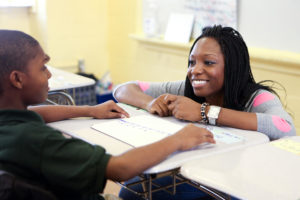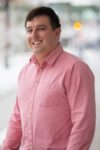Forrest Crawford and Sheryl Ellsworth Share their Stories of Being Educators in Utah
Join United Way of Salt Lake as we engage in a series of conversations with some of the inspiring Black Utahns committed to making a difference in our state.
Forrest Crawford and Sheryl Ellsworth were both Utah educators at different times, with different backgrounds, and drastically different careers. They honed their skills as educators in different places across the U.S. (and the world), and taught students of very different ages. Besides their presence in Utah, it’s hard to find much in common in the careers of Crawford and Ellsworth, which makes their incredibly similar conclusions about the role of educators in a community even more interesting.
 Forrest Crawford
Forrest Crawford
Forrest Crawford came to Utah to earn his bachelor’s degree in sociology – and with no intention of becoming a lifelong Utah resident. He left still-segregated Tulsa, Okla., and rode a bus all the way to Weber State College (now University) in Ogden.
It was a jarring change for young Crawford, at first. Here he was in a state where the Black community made up only half a percent of the population.
“I was wondering whether I had made a major mistake,” Crawford said. “I would be sitting in my dormitory room thinking that I had significantly misjudged my desire to want to play football in Ogden, Utah.”
Fortunately, that feeling didn’t last long. Crawford met Associate Dean Darnel Mooney soon after arriving – a tall, friendly man known for acquainting himself with Black students to help them feel less alone. Mooney connected Crawford to the local Black community. Plugging into the community around him came naturally, a priority he learned from his mother.
“Growing up in segregated Sand Springs, Oklahoma, my mother being a community activist, I saw and observed and experienced how she transcended her own Black community – how she was able to cultivate friendships among the white and the Black community for the purpose of creating change. I always had this in the back of my mind – Hazel Crawford was able to navigate this, why can’t you?”
Both his mother and Mooney served as examples of what Crawford began to set as a standard for in his own work. He held this with him through graduate school at the University of Utah, then into his role as a professor at Weber State, where he worked while he completed an education doctorate at Brigham Young University. Even as he rose to the heights of academic accomplishment, that philosophy kept him coming back to the people around him – to the community that helped him succeed.
“My scholarship is not narrowed just to my faculty colleagues,” he said. “My scholarship is my community.”
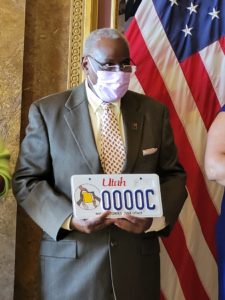
“The thing I took away from my international experience is that it makes sense to collaborate with other scholars,” Crawford said. “What was important to me was that my way of seeing the world was just one piece of the puzzle.”
This experience further honed Crawford’s perspective on education and its role in a community.
“You never just sit on your scholarly work, you never just sit on your ideal, you never just sit on your experience,” he said. “What you have to do is connect your individual experience into a larger community.”
He brought these lessons home to Utah where he continued to teach and mentor, spending decades at Weber State striving to be the Mr. Mooney for students who came under his tutelage. He worked on statewide initiatives and traveled the globe in the pursuit of building better educational institutions – all in the name of taking what he learned and bringing it back to his own community.
“Learn as much as you can about yourself,” Crawford said. “Because all the data, all the information that’s coming into you, your cognitive self is having to decipher that. I can maintain my sense of self, but still say I understand the perspective that you bring to me. That’s part of the way I teach my students.”
 Sheryl Ellsworth
Sheryl Ellsworth
Originally from Washington, D.C., and Virginia, Ellsworth’s journey into education began in Utah, where she attended Brigham Young University with the goal of becoming a journalist. As she worked on her degree, a passion for teaching began to develop and soon she knew that was where she belonged.
She started working for Teach for America after graduation, which took her back to the East Coast. After a short stint in New York City, she found herself back in the nation’s capital at a school that had something of a notorious reputation: Stanton Elementary.
“At the time it was the lowest-performing elementary school in Washington D.C., and at the time D.C. was the lowest-performing district in the nation,” Ellsworth said. “It was a school that for generations had been forgotten.”
Faced with the monumental task of improving the outcomes for students at Stanton, Ellsworth and her colleagues began listening to what the community had to say about the situation. Ellsworth herself made hundreds of visits to students’ homes while she worked at Stanton. With open lines of communication, the answers to creating a better learning environment at the school began to reveal themselves.
“The school had to be a wraparound model where kids felt safe,” she said. “We were able to get fresh garden vegetables delivered to the school through a nonprofit so that families had healthy choices, we were able to get counseling for students who had a parent or parents incarcerated – we just realized that the kids needed a lot more than everyday teaching.”
In only three years, the number of Stanton students scoring proficient on standardized tests grew from 9% to 48%. The enormous effort put in by Ellsworth and her colleagues paid off in enormous ways.
“It went from the school system telling families what they needed to families telling us what we could do for them,” Ellsworth said.
The work was rewarding but tough. After spending countless hours in addition to her teaching schedule, the tide began to shift. Suddenly applications to teach at Stanton began to increase, and Ellsworth felt the school was in good hands and she could move on. Her next destination saw her back in Utah.
“When I moved back to Utah there was a bill passed that would support the bottom 3% of schools in the state,” Ellsworth said of The School Turnaround and Leadership Development Act, which was passed in 2017.
Looking for work, she applied for a position with the Utah State Board of Education. As it turned out, her reputation preceded her. The incredible work that was being done had gained national attention, especially in the education world. A community engagement position was created for Ellsworth to help implement the new program around the state.
She was soon traveling to every corner of Utah, visiting schools and assuring administrators that this new law wasn’t designed to punish, but to help them provide for their students.
“I came from a turnaround school,” she recalled saying to faculty at schools she visited, “and we thought that family engagement didn’t need to be the focus either…Once we started focusing on it, everything else turned around.”
She didn’t stop there. After her work with USBE was completed, Ellsworth worked with multiple organizations to address real problems in Utah’s education system. First, she worked with the Flamboyan Fellowship, a D.C.-based organization that focused on family engagement in education. They interviewed Utah politicians, teachers, parents, students, and anyone who might have insight toward building education systems that were connected to the community. Next, she was part of the Harvard Business School’s Young American Leaders Program (YALB), which was designed to identify specific issues in the Greater Salt Lake area.
“We recognized that there was a lack of representation for BIPOC — Black, Indigenous, People of Color — in leadership positions in Utah,” Ellsworth said of her time with YALB. “So, they’re not seeing themselves as teachers, they’re not seeing themselves as politicians, they’re not seeing themselves as business leaders.”
There’s a lesson here that’s not far off from Crawford’s. Education is not a cold institution where students simply download knowledge. It’s an integral part of a community’s health. Making a positive impact in schools can have repercussions that last for generations. It’s a process we can all be involved in.
“It’s actually knowing the issues locally that the community is going through and finding ways to be an advocate and use your voice,” Ellsworth said. “Even if it’s something that doesn’t directly impact you, you can still be an advocate for change.”
Learn more about prominent people in Utah’s Black History by reading our blog on historian, Dr. Ronald Coleman and following along with our Black History Month series.
By Grant DeVuyst, Social Media Manager for United Way of Salt Lake


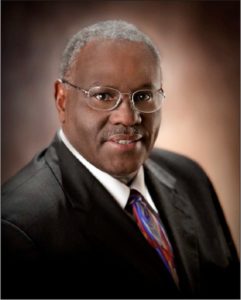 Forrest Crawford
Forrest Crawford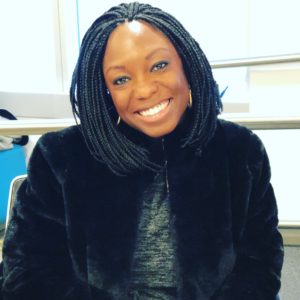 Sheryl Ellsworth
Sheryl Ellsworth